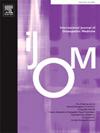“Disproportionate Olympic Rings” – The usage of a biopsychosocial (BPS) framework of care when managing people with musculoskeletal pain by osteopaths in Aotearoa/New Zealand– A qualitative study
IF 1.5
4区 医学
Q2 MEDICINE, GENERAL & INTERNAL
引用次数: 0
Abstract
Objectives
To address chronic musculoskeletal (MSK) pain effectively, a multidimensional model of care such as the biopsychosocial (BPS) model may be required. However, to date, the incorporation of the BPS model into osteopathic practice by New Zealand (NZ) osteopaths is unknown. Hence, the aims of this study were to: 1) investigate the incorporation of the BPS model into osteopathic practice by NZ osteopaths; (2) explore the attitudes and perceptions about the BPS model among NZ osteopaths; and (3) investigate the barriers to implementing the BPS model in NZ osteopathic practice.
Design
In-depth interviews; data analysed using thematic analysis.
Setting
Online.
Participants
A total of 14 NZ registered osteopaths (mean age = 49; 57 % males).
Results
Thematic analysis revealed three major categories: BPS resistant, BPS open and BPS embracing. A ‘cactus fractal model’ was proposed in which knowledge about the BPS model informs the professional identity of osteopaths and therefore their interaction with the health system. This can take the form of a positive or a negative fractal model. Hence, education about the BPS model during undergraduate training or as CPD courses may be imperative.
Conclusions
Participants in this study held a range of views about the usage of the BPS model in their clinical practice. Although, there is still resistance in using the BPS model, emerging evidence indicate that NZ osteopaths are open and/or to embrace the BPS model.
"不相称的奥运五环"--奥特亚罗瓦/新西兰的骨科医生在管理肌肉骨骼疼痛患者时使用生物-心理-社会(BPS)护理框架--一项定性研究
目的为了有效解决慢性肌肉骨骼(MSK)疼痛问题,可能需要一种多维护理模式,如生物心理社会(BPS)模式。然而,迄今为止,新西兰(NZ)骨科医生将 BPS 模式纳入骨科治疗实践的情况尚不清楚。因此,本研究的目的在于1) 调查新西兰骨科医生将 BPS 模式纳入骨科治疗实践的情况;(2) 探讨新西兰骨科医生对 BPS 模式的态度和看法;(3) 调查在新西兰骨科治疗实践中实施 BPS 模式的障碍:结果专题分析显示出三大类别:BPS 抵抗型、BPS 开放型和 BPS 拥抱型。我们提出了一个 "仙人掌分形模型",在这个模型中,有关 BPS 模型的知识会影响骨科医生的专业身份,从而影响他们与医疗系统的互动。这可以采取积极或消极分形模型的形式。因此,在本科生培训或持续专业发展课程中开展有关 BPS 模式的教育可能势在必行。尽管在使用 BPS 模式方面仍存在阻力,但新出现的证据表明,新西兰骨科医生对 BPS 模式持开放和/或接受态度。
本文章由计算机程序翻译,如有差异,请以英文原文为准。
求助全文
约1分钟内获得全文
求助全文
来源期刊
CiteScore
2.20
自引率
36.80%
发文量
42
审稿时长
3 months
期刊介绍:
The International Journal of Osteopathic Medicine is a peer-reviewed journal that provides for the publication of high quality research articles and review papers that are as broad as the many disciplines that influence and underpin the principles and practice of osteopathic medicine. Particular emphasis is given to basic science research, clinical epidemiology and health social science in relation to osteopathy and neuromusculoskeletal medicine.
The Editorial Board encourages submission of articles based on both quantitative and qualitative research designs. The Editorial Board also aims to provide a forum for discourse and debate on any aspect of osteopathy and neuromusculoskeletal medicine with the aim of critically evaluating existing practices in regard to the diagnosis, treatment and management of patients with neuromusculoskeletal disorders and somatic dysfunction. All manuscripts submitted to the IJOM are subject to a blinded review process. The categories currently available for publication include reports of original research, review papers, commentaries and articles related to clinical practice, including case reports. Further details can be found in the IJOM Instructions for Authors. Manuscripts are accepted for publication with the understanding that no substantial part has been, or will be published elsewhere.

 求助内容:
求助内容: 应助结果提醒方式:
应助结果提醒方式:


